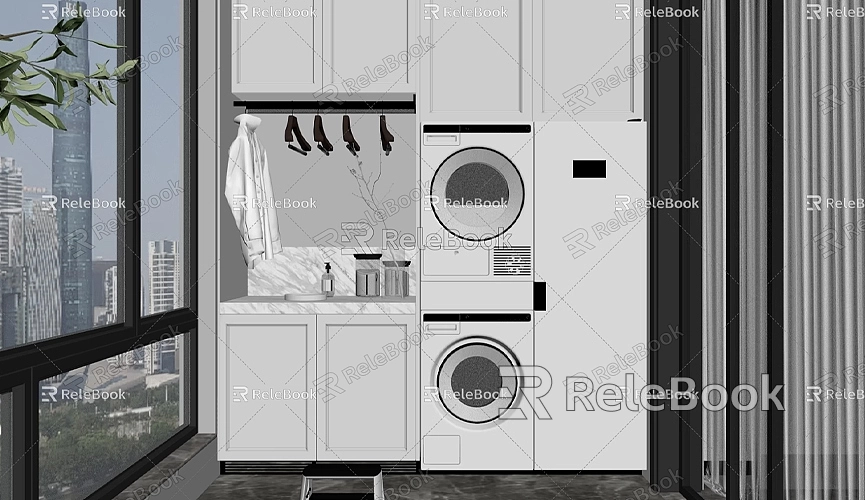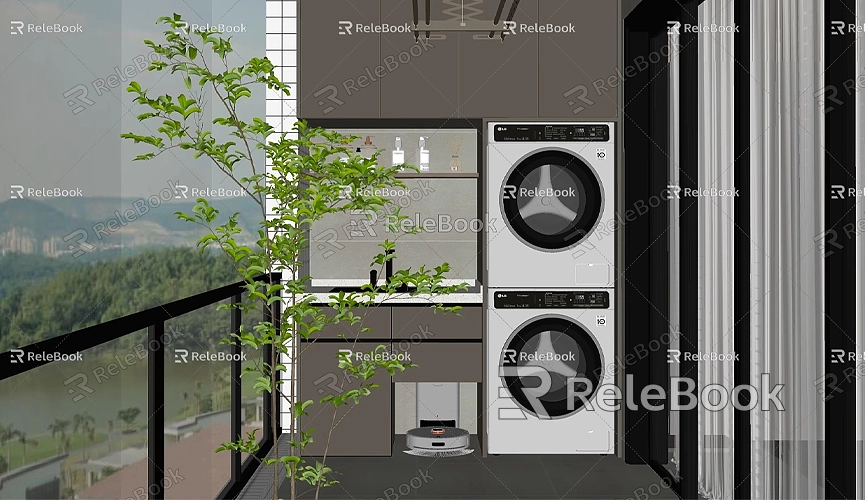How to Share SketchUp Online Models
SketchUp, a highly popular 3D modeling tool, is widely used by designers, architects, interior designers, and engineers around the world. Its ease of use, powerful features, and speed in creating precise and beautiful 3D models have made it a favorite in architecture, landscape design, and interior design. However, completing a model doesn’t mark the end of a project. The challenge for designers is how to effectively and efficiently share these models with clients, teams, or collaborators, ensuring the smooth progress of the project.
In the past, many designers relied on traditional file-sharing methods, such as email or USB storage devices, to send files to clients. However, with the continuous development of internet technology and cloud computing, an increasing number of designers now turn to online platforms to share and present their models. Cloud storage services, dedicated online collaboration platforms, and 3D viewers enable designers to communicate and collaborate more efficiently with clients and teams, further enhancing workflow efficiency and project quality.
In this article, we will explore various online platforms for sharing SketchUp models and some best practices that can help designers interact more effectively with clients and improve project management transparency and efficiency.

Why Choose to Share SketchUp Models Online?
As project complexity increases, communication between designers and clients becomes more critical. Sharing SketchUp models online not only saves time but also improves the quality of collaboration. Compared to traditional methods, online sharing offers several clear advantages:
Increased Efficiency
Traditional file transfer methods often require manual uploads and downloads, and managing file versions can be challenging. Online sharing allows designers to upload models to the cloud, where clients or team members can access the latest version at any time, eliminating the risk of version confusion. With real-time cloud storage updates, clients can view the most current design, and designers can make adjustments based on client feedback.
Improved Communication
Online sharing of SketchUp models isn’t just about transferring files; it adds interactivity. Designers and clients can communicate in real-time within the model, annotate, comment, and propose modifications, ensuring that the design is well understood and implemented. Many online platforms also allow clients to virtually walk through the model, experiencing its spatiality and layout, which enhances the design’s visual impact.
Support for Multiple Devices and Platforms
Most modern online platforms support cross-platform access, meaning clients can view SketchUp models on their computer, tablet, or smartphone. Whether they’re at the office, home, or on the go, clients only need a link to access the design files, greatly improving communication flexibility.
File Security
Sharing SketchUp models online enables designers to have more precise control over file access permissions. For instance, designers can set read-only access to prevent unauthorized edits or modifications. Additionally, most cloud and collaboration platforms provide backup and recovery features, ensuring the security of the model files and protecting against accidental loss or damage, which could affect project timelines.
Common Ways to Share SketchUp Models Online
Now that we understand the benefits of online sharing, let’s look at some common methods for sharing SketchUp models online, helping designers choose the best option for their specific projects.
1. Cloud Storage Platforms: Efficient File Management and Sharing
Cloud storage platforms such as Google Drive, Dropbox, and OneDrive have become the go-to methods for file sharing. Designers can upload their SketchUp models to these platforms and share them via links with clients or team members. Clients can access model files directly through these links, without needing to download or install SketchUp software.
Google Drive
Google Drive offers free storage and supports fast uploads and file sharing. Designers can easily upload SketchUp files to Google Drive and generate a shareable link to send to clients. Google Drive also allows users to set access permissions, ensuring file security. While Google Drive doesn’t natively support online viewing of SketchUp models, it can display images and documents, and users can provide feedback via Google Docs.
Dropbox
Dropbox is another popular cloud storage platform that provides efficient file management and sharing. Designers can upload SketchUp models to Dropbox and generate a shareable link. Dropbox supports cross-platform usage, meaning clients can access the models on any device. While Dropbox doesn’t support full interactivity with SketchUp models, it does allow for basic file previews, offering clients an overview of the design.

OneDrive
OneDrive is Microsoft’s cloud storage service, particularly suitable for Windows users. It integrates seamlessly with Microsoft Office applications and provides storage, syncing, and sharing capabilities. Designers can upload SketchUp files to OneDrive and share them with clients, utilizing OneDrive’s version control features to ensure clients always see the latest design version. Its cross-platform support makes it easy for clients to view the model on desktop or mobile devices.
2. Using SketchUp's Cloud Services: More Professional Sharing Tools
SketchUp itself offers several cloud-based tools that are specifically designed for sharing and collaborating on models. These tools are particularly useful for high-interaction design projects.
SketchUp for Web
SketchUp for Web is a browser-based version of SketchUp, allowing users to create and edit models directly in their browser. If a model is already created locally, designers can upload it to SketchUp’s cloud platform and generate a shareable link. Clients can then access the model via this link and view it online. SketchUp for Web supports basic editing features, so designers and clients can collaborate directly within the same project.
SketchUp Viewer
SketchUp Viewer is a handy tool for clients who are unfamiliar with SketchUp. Available on Windows, Mac, iOS, and Android platforms, clients can download the Viewer app and open the file link provided by the designer. This tool allows clients to rotate, zoom, and walk through the model, helping them better understand its structure and layout. SketchUp Viewer makes it easier for designers and clients to communicate design intentions and provide feedback.
Trimble Connect
Trimble Connect, a collaboration platform developed by SketchUp’s parent company Trimble, is designed specifically for the construction and design industries. Designers can upload SketchUp models to Trimble Connect and generate a shareable link for clients or team members. Unlike general cloud storage platforms, Trimble Connect is optimized for 3D models and offers powerful features for 3D viewing, annotation, and collaboration. Clients can directly annotate the model with comments and notes, allowing designers to adjust the design based on real-time feedback.
3. Sharing Models via 3D Viewer Platforms
For a more immersive design presentation, designers can use 3D viewer platforms. Platforms such as Sketchfab, Vimeo 3D, and Clarity allow designers to upload SketchUp models and convert them into interactive 3D displays. These platforms enable real-time model viewing and interaction, allowing clients to rotate, zoom, and even take virtual tours of the model.
· Sketchfab
Sketchfab is a widely used 3D model display platform that supports multiple file formats, including SketchUp. Designers can upload SketchUp models to Sketchfab and generate a shareable link or embed code to display the model on websites or social media. Clients can interact with the model in a browser, rotating and zooming in to explore it. Sketchfab also supports Virtual Reality (VR), allowing clients to experience the model in an immersive way, enhancing the design’s visual impact.
Enhancing Design Presentation: High-Quality 3D Textures and Resources
To make SketchUp models more realistic and attractive, designers often use high-quality 3D textures, HDRI images, and other detailed 3D model resources. These resources significantly enhance the visual appeal of the models, helping clients better understand design intentions. This is especially important for complex projects, where high-quality renderings and detailed displays can greatly increase client confidence.
If you need high-quality 3D textures and HDRI images, you can download them for free at https://textures.relebook.com/. Additionally, if you require beautiful 3D models, https://3dmodels.relebook.com/ provides a vast collection of premium 3D resources to enhance your design quality.
Online sharing of SketchUp models has become an essential tool for designers to communicate effectively with clients and teams. By using cloud storage platforms, SketchUp’s own cloud services, professional collaboration platforms, and 3D viewer tools, designers can easily share their work and interact with clients in real time. This approach not only improves workflow efficiency and communication but also helps designers manage projects more effectively and enhance design quality.
By incorporating high-quality 3D textures and model resources, designers can make their models more realistic and compelling, ensuring they meet clients’ expectations and build trust. We hope the methods outlined in this article help you share your SketchUp models more efficiently, improving collaboration with clients and facilitating project success.

